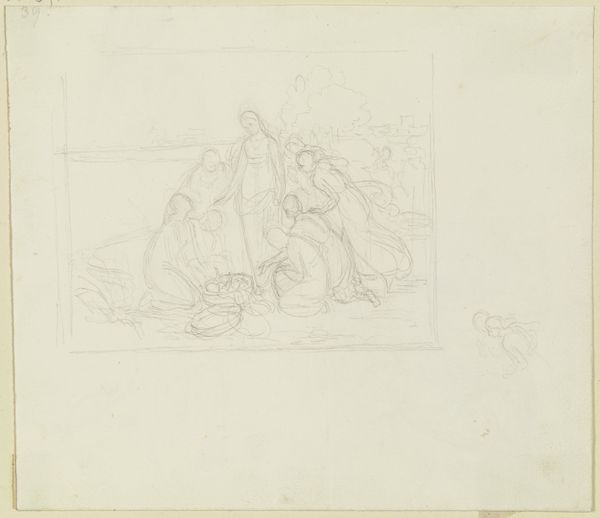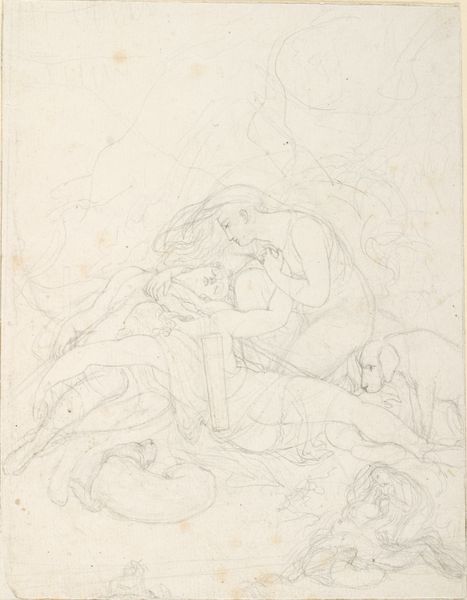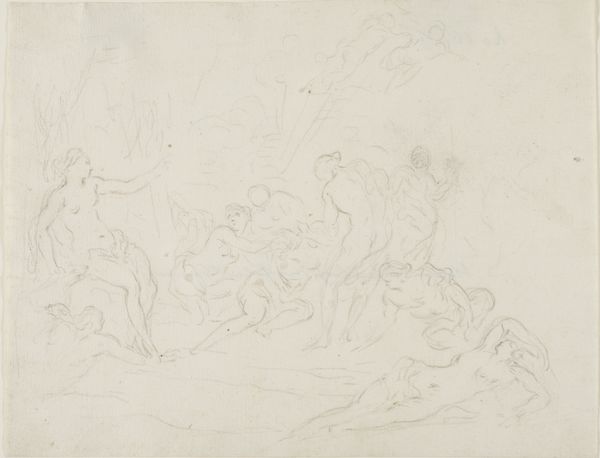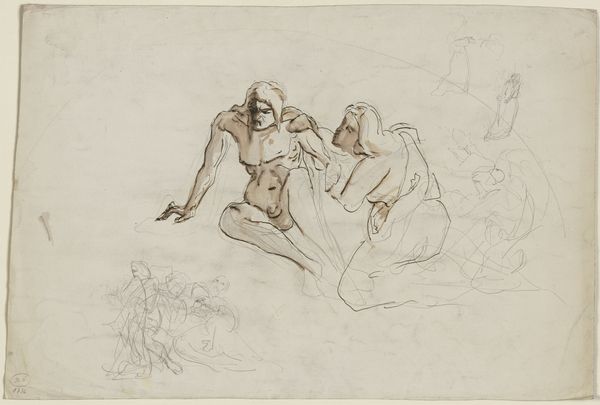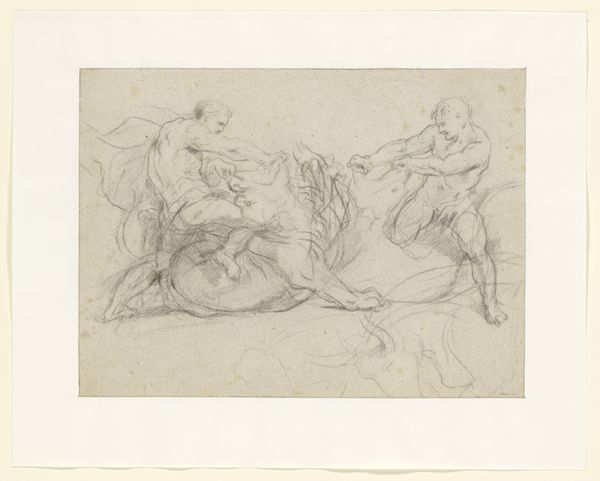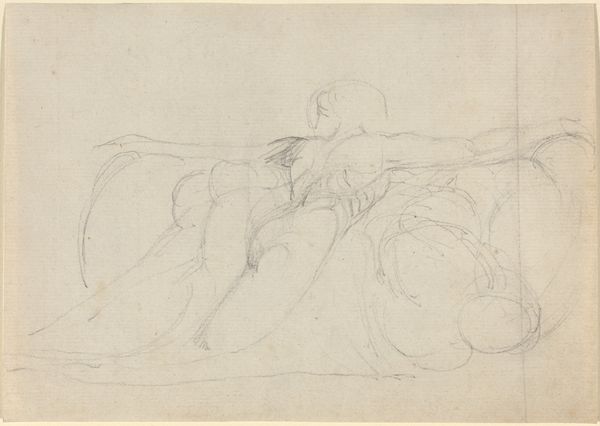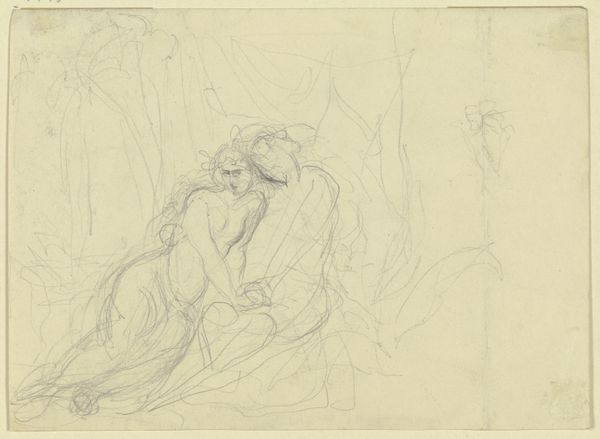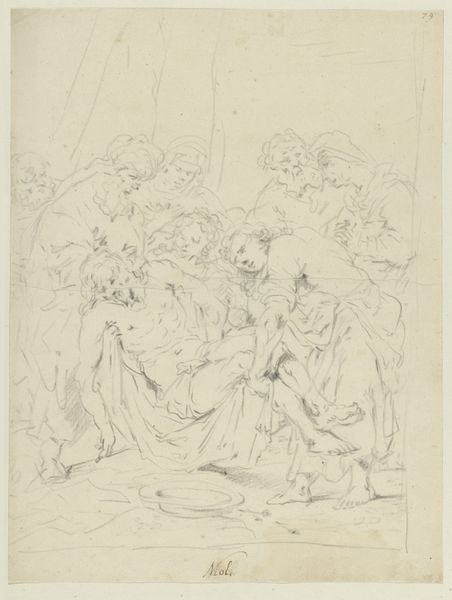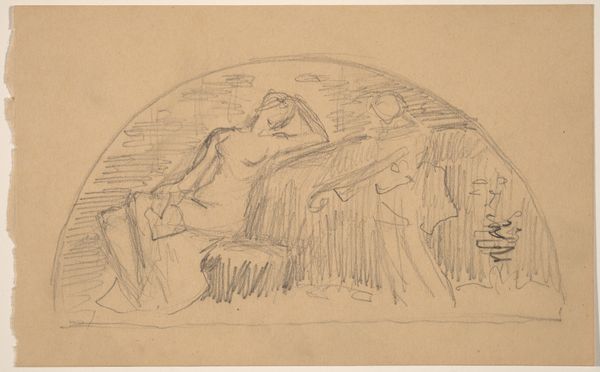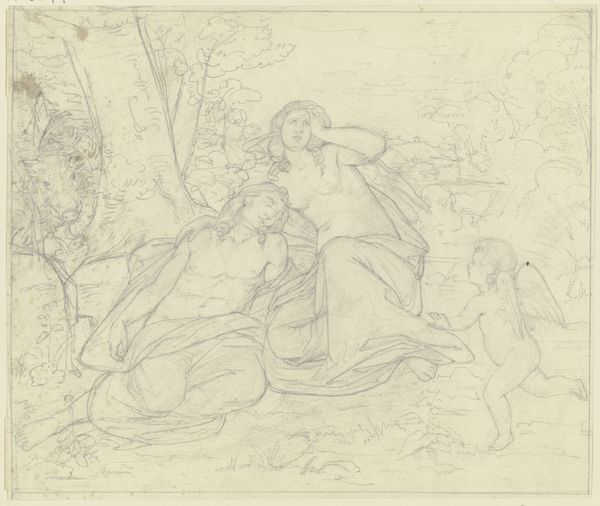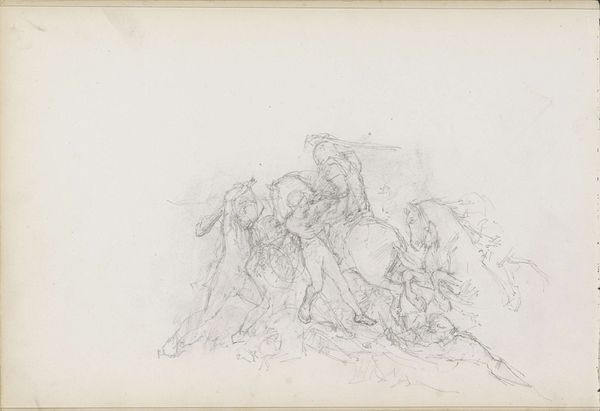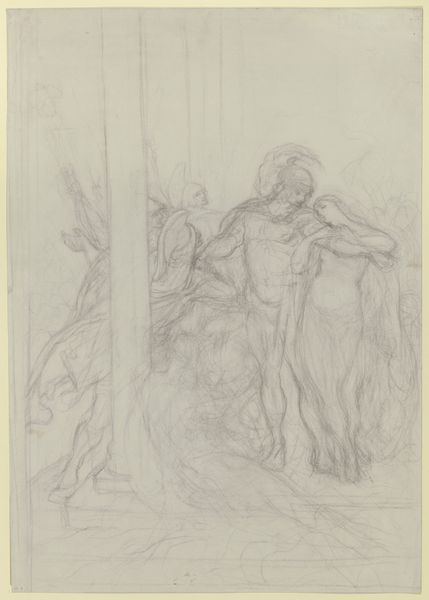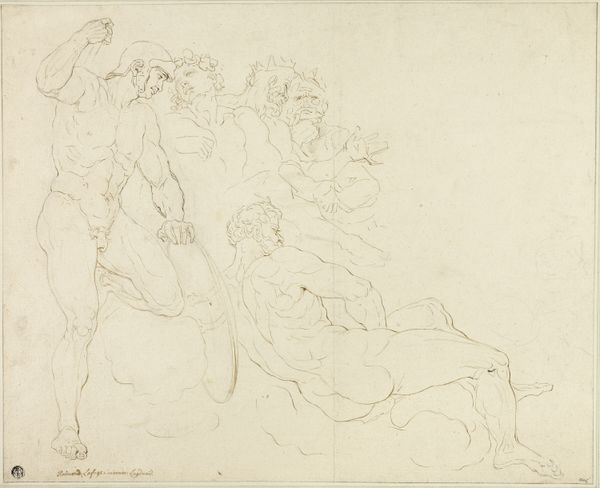
drawing
#
drawing
#
narrative-art
#
figuration
#
academic-art
Copyright: Public Domain
Curator: Here we have a drawing titled "Rescue of Moses" by Gustav Heinrich Naeke, part of the Städel Museum collection. Editor: It has an ethereal quality, almost ghostlike, owing to the lightness of the pencil strokes and minimal shading. It conveys a sense of anticipation, wouldn't you agree? Curator: Absolutely. The academic style places a strong emphasis on figuration. We see the narrative clearly, and that is, of course, the finding of Moses. I find it fascinating how Naeke renders this biblical scene, potentially situating it within debates around religious identity and representation in his own era. How might audiences at the time engaged with it, understanding their cultural milieu? Editor: Given its narrative-art designation, the intended audience would likely recognize the biblical story instantly. Its political power resides in how such stories have been utilized by various socio-political entities across time, and how its iconography might reflect certain power structures. The soft style removes all edges, thus, creating this gentle atmosphere where Moses is peacefully found in the river Nile, instead of an explicit conflict. Curator: Indeed. Its ambiguity could allow for interpretations that critique societal inequalities and colonial power dynamics present during the artist's time. By depoliticizing, it’s as if the artist can explore this in a covert way, a silent protest if you will. What role do you think institutional endorsement had to play in how artwork with these themes are presented? Editor: Museums have always been central in validating certain narratives while overlooking others. Naeke's work provides an occasion to discuss the institutional framing of historical subjects and prompt questions about whose stories are amplified, and how their images could be recontextualized and challenged. Curator: Absolutely. Engaging with artwork from a position that questions what is visible—or isn’t—reveals just how layered our comprehension of its importance might be. Editor: By exploring Naeke's "Rescue of Moses" together, perhaps, we have demonstrated how social and political readings may enrich our understanding of art historical works.
Comments
No comments
Be the first to comment and join the conversation on the ultimate creative platform.
